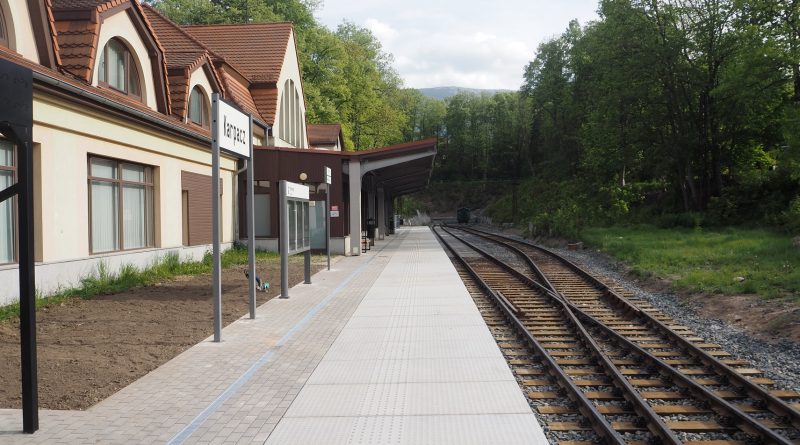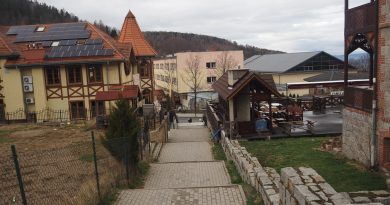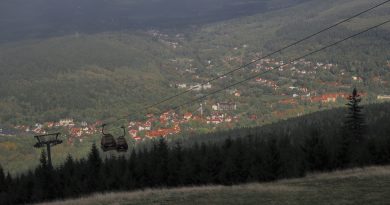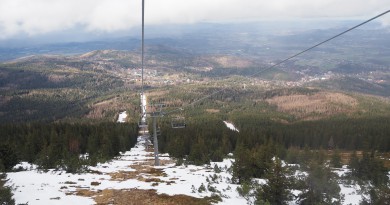Train Returns to Karpacz in a Month. Climate Watchdogs: Just the Beginning of Sustainable Mobility
The Bender Society is conducting the project “Climate Watchdog for Peripheries.” The initiative is financially supported by the PROTEUS program, conducted by the Transatlantic Foundation, the European arm of the German Marshall Fund of the United States.


The project is co-financed by the European Union. The views and opinions expressed are those of the author(s) and do not necessarily reflect those of the European Union or the European Education and Culture Executive Agency. Neither the EU nor the granting authority can be held responsible for them.
Eight municipalities with populations under 20,000 were selected to investigate climate-related issues: Jedlina-Zdrój, Kamieniec Ząbkowicki, Karpacz, Malczyce, Mirsk, Szklarska Poręba, Świeradów-Zdrój, and Walim.
Activists previously examined the potential return of train service to Karpacz in Giant Mountains (Karkonosze). Now the issue is back in the spotlight, as the plans are close to being finalized.
See also: Climate Watchdogs on the Periphery Explain: Why Do We Need Climate Strategies?
Train service returns to Karpacz
The last train reached Karpacz in 2000. Now, 25 years later, trains are set to return to the mountain resort and nearby towns, affecting a total of 13,000 residents in Lower Silesia.
“This is a symbolic new chapter in the development of rail transport in our region. We’re restoring lines, bringing trains back to places where they used to be part of daily life, tackling transport exclusion, and proving that Lower Silesia is Poland’s infrastructure heart,” said Paweł Gancarz, marshal of the Lower Silesian Voivodeship.

Travel time from Wrocław to Karpacz will be just over 2 hours and 20 minutes. Initially, plans included 8 daily round trips between Jelenia Góra and Karpacz. However, Lower Silesian Railways (Koleje Dolnośląskie, KD) managed to schedule up to 14 round trips on weekends.
Fast service and retro trains
The fastest service (KD Sprinter) will reach Jelenia Góra from Karpacz in 18 minutes. There will be 12 round trips on weekdays and 14 on weekends. Four of the weekend trips will be operated using historic trains from the Railway Enthusiasts Club, in partnership with KD, marking the first retro train service on this route.
Jeremi Jarosz of the Bender Society said: “Each year, more cars drive into Karpacz, especially during the tourist season. Rail offers a real alternative for both residents and tourists. Reducing car traffic means less congestion, noise, smog, and environmental damage. Restoring rail to Karpacz is more than an infrastructure investment—it’s a strategic step toward a modern, low-emission mobility model. Trains emit far less carbon dioxide per passenger than cars or buses.”
Is the schedule good enough?
Some critics, like the authors of the „Railways in Lower Silesia” profile, argue the timetable doesn’t go far enough.
“People keep asking why we don’t call 8/12/14 trips a ‘good offer’? Because Karpacz has 4,300 residents, Mysłakowice 4,500 (and only gets 8 trips since 4/6 don’t stop there due to KD’s obsession with ‘sprinters’), and Jelenia Góra 75,000. Along the route are also Łomnica (1,900) and Miłków (2,100). By comparison, Josefův Důl in Czechia has 900 residents, Smržovka 3,900, and they’re linked by a 7 km line with 22 round trips on weekdays and 15 on weekends, all stopping at every station—even ones with fewer than 200 residents.”
The Bender Society agrees the schedule could be better, especially in early mornings and late evenings, to accommodate shift workers and students. But the real test will be after the service starts—looking at ridership, punctuality, and community needs will inform any necessary adjustments.
See also: Climate Watchdogs Score a Win on the Periphery! Świeradów-Zdrój to Develop Environmental Plan
What’s next for sustainable transport?
Activists emphasize that bringing back the train is just the start of building a sustainable mobility system in the Karkonosze region.
Next steps should include a fully integrated transit hub at the Karpacz station and shuttle buses from nearby villages like Ścięgny, Borowice, and Przesieka. A Bike&Ride system, bike racks, and pedestrian-friendly access to the station—signage, lighting, smooth pavements—are also needed.
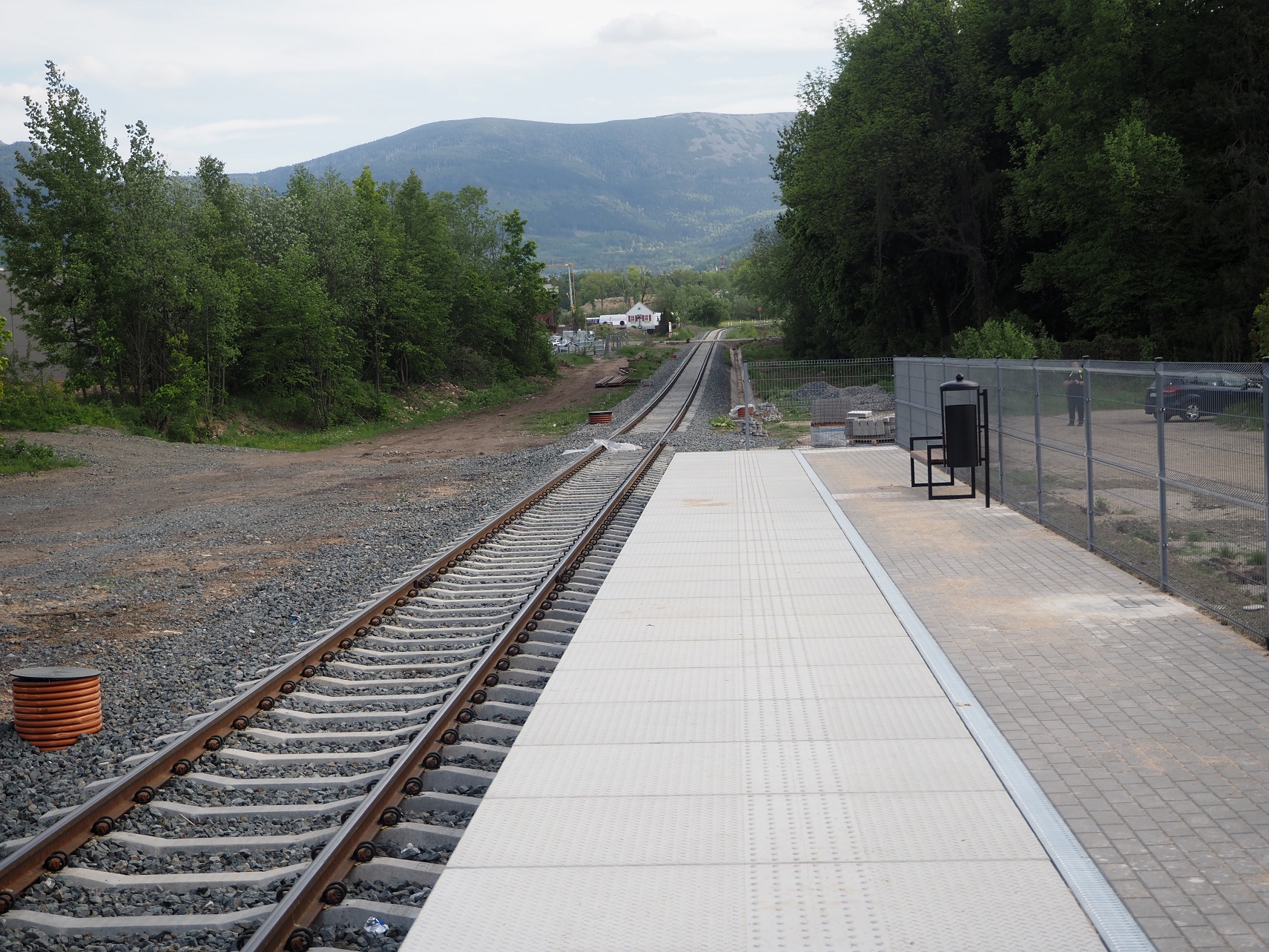
“Connecting rail with regional buses, local transport, and bike paths, through integrated tickets and synchronized schedules, can create a system that truly works, not just one that looks good on paper. We also believe that talks with Czech partners about cross-border rail and bus links in the Karkonosze are crucial,” says a Bender Society representative.
The issue will be addressed at the upcoming May 29 debate as part of the “Climate Watchdog for Peripheries” project.

